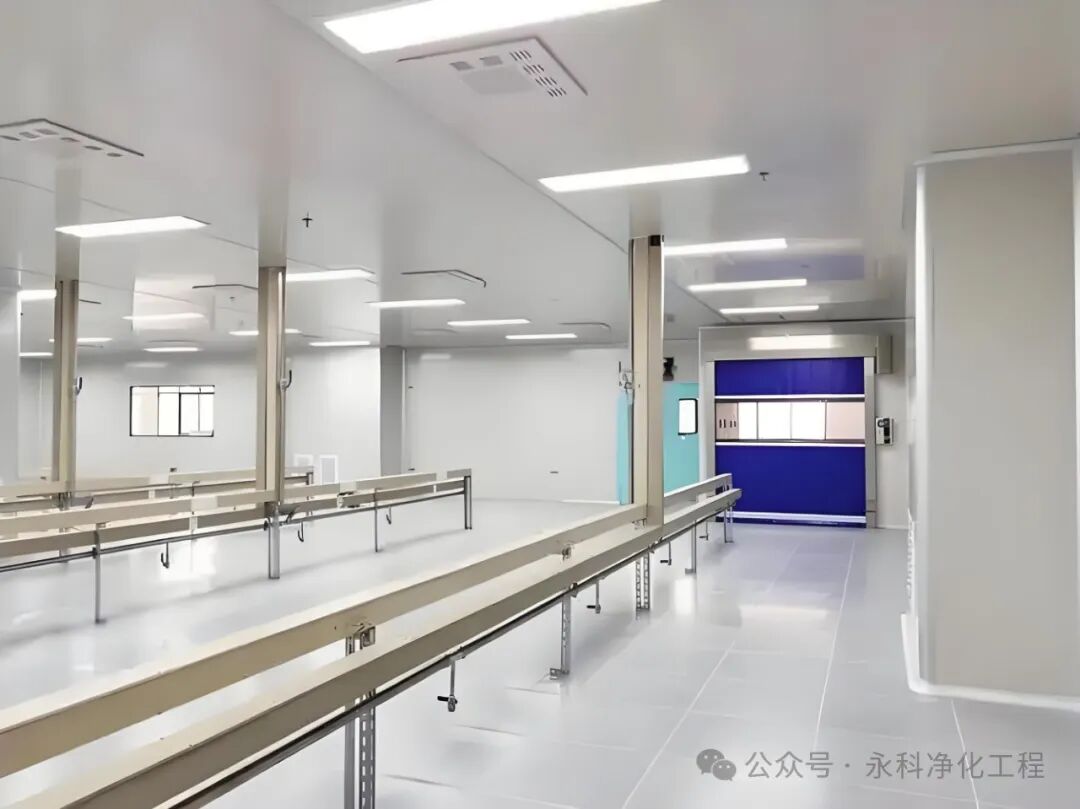In today’s rapidly advancing technological era, PCBs (Printed Circuit Boards) are essential components in electronic devices, and their manufacturing quality directly impacts the performance and reliability of the entire electronic product. As electronic products trend towards miniaturization, high performance, and high integration, the manufacturing of PCBs increasingly demands stringent production environment standards. The emergence of PCB cleanrooms and the precision of their purification solutions have become key factors in determining the quality and production efficiency of PCB products.

1. Environmental Control: Creating a “Clean Land” for Precision Manufacturing
The environmental control of PCB cleanrooms is one of the core aspects of the purification solution. To meet the demands of precision manufacturing, the cleanroom must strictly control environmental parameters such as temperature, humidity, and lighting.
Regarding temperature, an appropriate range ensures the stability of various materials during the PCB manufacturing process, avoiding issues such as material deformation and performance degradation due to temperature fluctuations. Generally, a temperature control range of 22°C to 28°C is suitable for PCB cleanrooms. Humidity control is equally important; excessive humidity can lead to moisture on the PCB surface, affecting insulation performance, while too low humidity can easily generate static electricity, damaging electronic components. Therefore, the humidity in the cleanroom is typically controlled between 40% and 60% RH.
Lighting conditions should not be overlooked. Appropriate light intensity and uniformity ensure that operators can clearly observe the PCB manufacturing process, promptly identifying and addressing quality issues. Additionally, lighting should avoid glare to prevent affecting the operators’ vision and work efficiency.
2. Air Purification: Safeguarding Precision Manufacturing
Air purification is a crucial component of the PCB cleanroom purification solution. During PCB manufacturing, tiny dust, particulate matter, and chemical pollutants can severely impact PCB quality. Therefore, the air purification system must possess high filtration efficiency to effectively remove dust, particles, and harmful gases from the air.
Currently, commonly used air purification technologies include High-Efficiency Particulate Air (HEPA) filters and Ultra-Low Penetration Air (ULPA) filters. These filters can capture particles smaller than 0.3 microns, ensuring that the air cleanliness in the cleanroom meets the required standards. For high-precision PCB manufacturing, the air cleanliness may need to reach ISO 14644-1 Class 1 standards (i.e., no more than 10 particles larger than 0.1 microns per cubic meter of air).
Moreover, the air purification system must have a well-designed airflow organization to ensure uniform air circulation within the cleanroom, avoiding dead zones and eddies, thus maintaining consistent air cleanliness throughout the facility.
3. Equipment Selection: The “Tools” for Matching Precision Manufacturing
In PCB cleanrooms, the selection of equipment directly relates to whether the purification solution can precisely meet the demands of precision manufacturing. From production equipment to auxiliary equipment, careful selection based on the process characteristics and quality requirements of PCB manufacturing is essential.
For production equipment, it is necessary to choose devices with high precision, stability, and low pollution emissions. For example, high-precision screen printers can ensure accurate printing of circuits and patterns on PCBs; advanced etching equipment can achieve uniform and precise etching effects, enhancing PCB quality and performance.
Auxiliary equipment, such as air purification devices and temperature and humidity control systems, must also exhibit efficient and reliable performance. The airflow and filtration efficiency of air purification devices should match the cleanroom’s area and cleanliness requirements; the control precision and response speed of temperature and humidity control devices should meet the environmental control needs of the cleanroom.
4. Personnel Management: The Key to Successful Implementation of Purification Solutions
Personnel are the most active factor in PCB cleanrooms and are crucial for the successful implementation of purification solutions. In precision manufacturing processes, personnel operations and behaviors can impact the cleanroom environment, necessitating enhanced personnel management.
First, strict training should be provided for personnel entering the cleanroom, ensuring they understand the environmental requirements, operational specifications, and precautions of the cleanroom. Training content should include personal hygiene habits, proper use of protective equipment, and operation and maintenance of equipment.
Secondly, a comprehensive personnel access management system should be established. Personnel must change into clean work clothes and footwear before entering the cleanroom and undergo cleaning treatment through air showers and other purification devices to prevent bringing external contaminants into the cleanroom. Additionally, the frequency and number of personnel entering and exiting should be controlled to avoid excessive personnel flow that could affect air cleanliness.
Conclusion by Fujian Yongke
The precision of the purification solution in PCB cleanrooms to meet the demands of precision manufacturing is key to ensuring PCB product quality, enhancing production efficiency, and promoting industry development. Through scientifically sound environmental control, efficient air purification, appropriate equipment selection, and strict personnel management, a stable, clean, and reliable production environment for PCB manufacturing can be established.
In the future, with continuous technological advancements and the ongoing development of PCB manufacturing processes, the purification solutions for PCB cleanrooms will also need to innovate and improve. For instance, adopting more advanced air purification technologies and intelligent environmental control systems to meet higher precision manufacturing demands. Additionally, strengthening personnel training and management to enhance personnel quality and operational skills is also crucial for ensuring the effective implementation of purification solutions.
In summary, the precision of the purification solution in PCB cleanrooms to meet the demands of precision manufacturing is an inevitable trend in the PCB manufacturing industry. Only by continuously improving purification levels can we provide strong guarantees for the quality and performance of electronic products, driving the sustained development of the entire electronics industry.